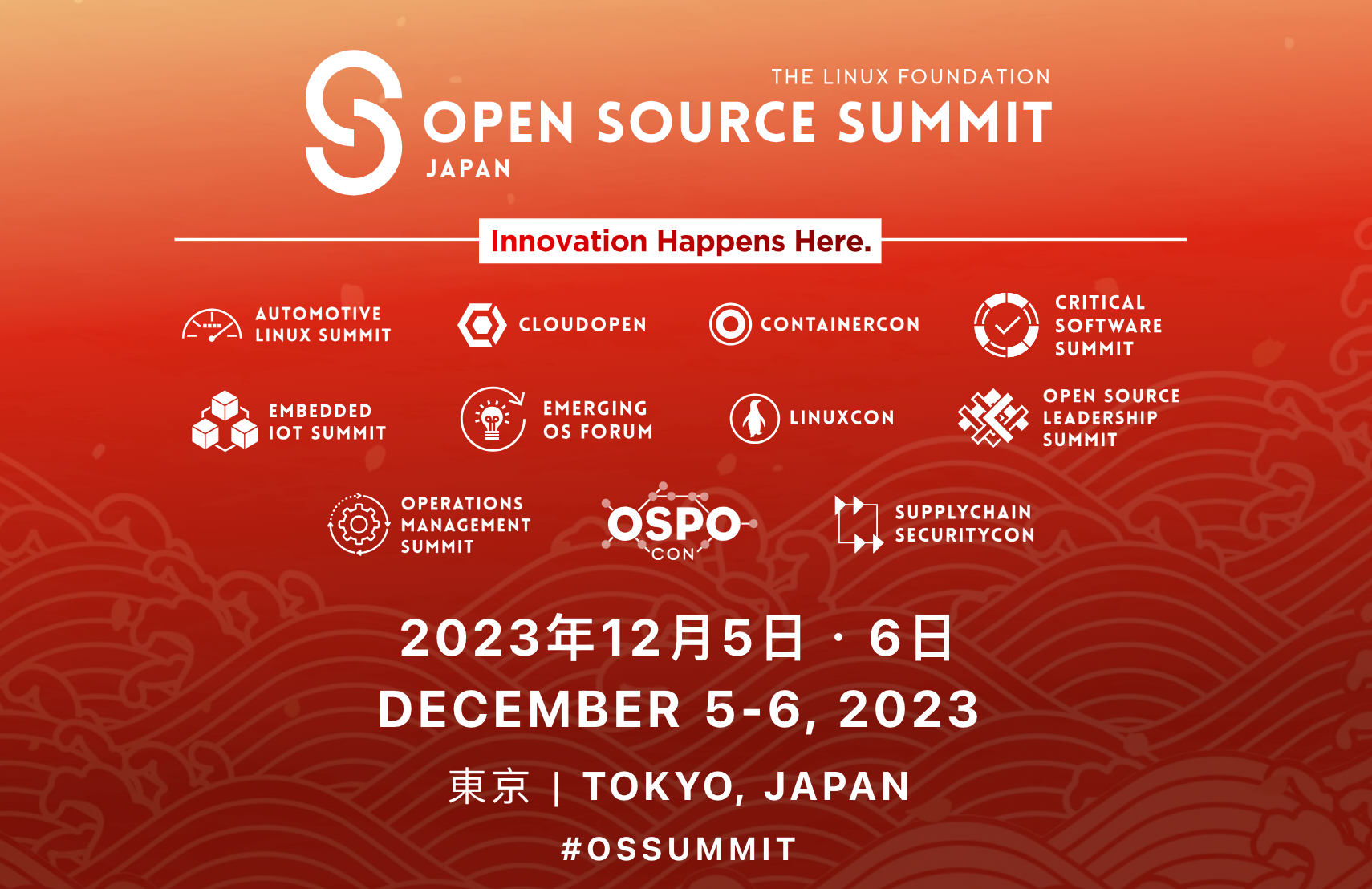Open Source Summit Japan, happening on December 5-6 in Tokyo, is the premier event for open source developers, technologists, and community leaders to collaborate, share information, solve problems and gain knowledge, furthering open source innovation and ensuring a sustainable open source ecosystem. It is the gathering place for open source code and community contributors.
Open Source Summit is a conference umbrella, composed of a collection of events covering the most important technologies, topics, and issues affecting open source today. At Open Source Summit Japan, those events include: Critical Software Summit, Embedded IoT Summit, LinuxCon, Open Source Leadership Summit and more.
Register here for in-person attendance. Virtual registration is not required to access the event live stream. All conference sessions will be live-streamed to the Linux Foundation YouTube channel with freely available access during the event. Live stream links for each session can be accessed from each session listing in the schedule (coming soon). Want more information on virtual attendance? Click here for more information.
Zephyr will be featured at the OSSummit in several sessions including (all session times listed below are in Japan Standard Time):
Tuesday, December 5
10:15 – 10:30 am: Keynote: Building Dependable Systems with Open Source – Kate Stewart, Vice President of Dependable Embedded Systems, The Linux Foundation
By looking at the press headlines, we’ve learned that open source is already being used in market segments (like space, automotive, industrial, medical, agricultural) applications that have safety considerations today. Details about the safety analysis performed are behind NDAs and are not available to developers in the open source projects being used in these products. To make the challenge even more interesting, the processes the safety standards are expecting are behind paywalls, and not readily accessible to the wider open source community maintainers and developers. Figuring out pragmatic steps to adopt in open source projects requires the safety assessor communities, the product creators, and open source developers to communicate openly. There are some tasks that can be done today that help, like knowing exactly what source is being included in a system and how it was configured and built. Automatic creation of accurate Software Bill of Materials (SBOMs), is one pragmatic step that has emerged as a best practice for security and safety analysis. This talk will overview some of the methods being applied in some open source projects (like Linux, Xen & Zephyr), as we try to establish other pragmatic steps when open source projects are used in safety critical. Add this to your schedule here.
5:30-6:10 pm: Zephyr Project: Results from Applying Open Source and Security Best Practices – Kate Stewart, Linux Foundation
Wednesday, December 6
11:25 am-12:05 pm: Supporting Hobbyist Friendly OpenSource Hardware in Zephyr – Hiroshi Tokita, Fujitsu Ltd.
To learn more about the event or to register for it, go to the main event website here: https://events.linuxfoundation.org/open-source-summit-japan/.

